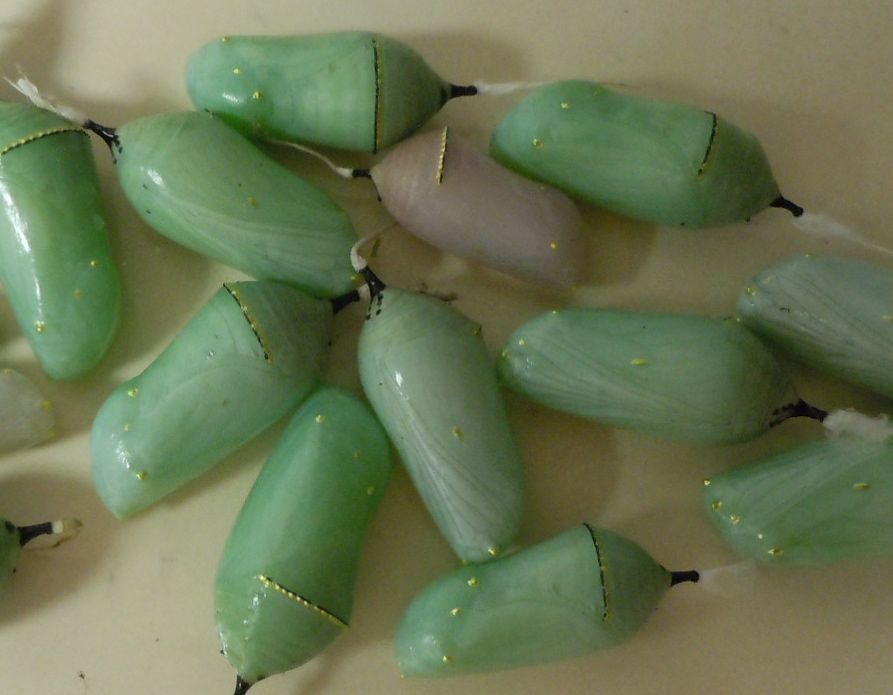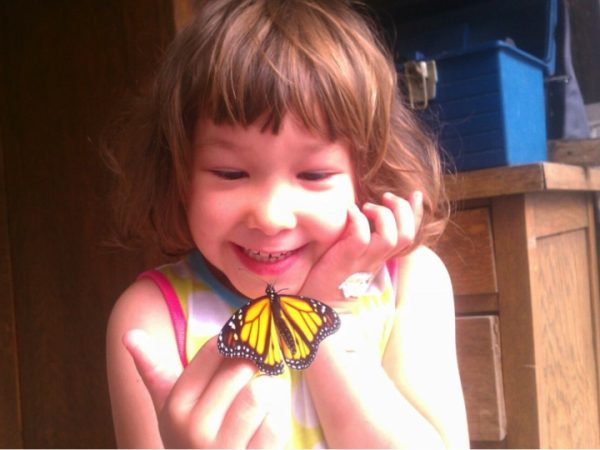Members of the International Butterfly Breeders Association (IBBA) recently met with representatives of U.S. Fish and Wildlife Services (USFWS), regarding the upcoming listing of the monarch butterfly as “threatened” under the Endangered Species Act.
How did it go?
“It was frustrating,” said Kathy Marshburn, IBBA board member and spokesperson for the commercial butterfly industry’s 60 members. “We don’t think they know anything about our industry,” she added.
Marshburn and 11 other IBBA representatives met with USFWS via Zoom on Friday, February 21. Seven USFWS representatives started the two-hour call, but only four USFWS staffers stayed for the entire meeting.
According to Marshburn, the IBBA was asked to explain their standard operating protocols such as how they go about raising healthy butterflies.
They did so through a powerpoint presentation that took up much of the meeting. The IBBA also proposed creating a butterfly breeding licensing program that would require breeders to take and pass a course that would teach them how to raise healthy, disease-free butterflies, and a requirement for breeders to be recertified every two years.
USFWS also wanted to know an estimated number of how many monarch butterflies are raised by IBBA members each year.
IBBA conducted an internal survey, and while Marshburn conceded it “wasn’t scientific,” the estimated number of monarch butterflies raised, sold and released came to 38,000 per year. This number does not reflect the monarchs sold to exhibits that do not release butterflies, Marshburn said.
Currently, professional butterfly breeders raise lepidoptera for sale, shipment and profit, typically charging $6-$10 a piece, plus shipping and handling. That’s how butterfly houses at museums and zoos, butterfly releases at weddings and funerals, and caterpillar condos for schools and festivals, all are made possible.
The USDA regulates the industry, and requires permits for any of the nine butterfly species legally allowed to be shipped across state lines. Not all states allow all nine species.

Raising healthy, disease-free butterflies requires a thoughtful, sanitary approach at every stage–from egg to caterpillar to chrysalis to adult. –Photo by Monika Maeckle
The ESA listing as proposed would allow the rearing and annual sale of only 250 monarch butterflies by any individual. Shipping them would be illegal. The 90-day public comment period that began December 12, 2024 continues through March 12, 2025. After that, USFWS will review comments and consider new information and develop a final ruling within one year.
According to the current ESA listing under consideration, someone who raises or tags more than 250 butterflies for scientific or educational purposes must secure a permit from USFWS. Given that butterfly breeders are already required to secure a permit from the USDA, “Doesn’t a permit from USDA and a permit from USFWS seem redundant?” asked Marshburn.

Kids of all ages will always remember the first time they tagged a monarch butterfly. Here, docent Veronica Prida shows a pair of children how it’s done. –Photo by Monika Maeckle
The Association for Butterflies (AFB), another butterfly breeding trade group, also recently chimed in on the contentious ESA listing.
“The listing is written in such a way that it is very biased against butterfly farmers to begin with,” David Folk told the Lancaster Farming News.
Folk, a longtime breeder and AFB member co-owns Folk’s Butterfly Farm in Nescopick, Pennsylvania. The farm hosts tours for children and other visitors, providing real-life contact and exposure to butterflies and their host plants.
According to Folk, USFWS doesn’t think anybody should raise butterflies and make any money off them.
“The way the petition is written, they want to allow citizen scientists and schools to raise up to 250 monarchs,” he said. “But most of your citizen scientists don’t scan for disease like we do. They don’t scope their butterflies for OE.”
OE, the monarch butterfly community’s acronym for ophryocystis elektroscirrha, is a protozoan parasite that infects monarch caterpillars and is carried by adults.
Marshburn said that at the IBBA meeting with USFWS, the organization made it clear to them that “the exceptions in the 4D rule as detailed right now will put us out of business.” She said it’s just not feasible from a business perspective to limit monarch butterfly production to 250 per year, nor is disallowing interstate transport, since most monarch butterfly breeders ship monarchs to exhibitions, festivals and museums all over the country.
“How can you talk about monarch conservation in your exhibit when you don’t have any monarchs available?” asked Marshburn.
Repeated attempts over four days requesting comment and responses to questions from USFWS, including those who attended the Zoom call with the IBBA, went unanswered.
“In this time of transition, we have had longer approval times than usual,” wrote Melissa A. Clark, Public Affairs Specialist, USFWS Midwest Region, via email, presumably referring to recent layoffs provoked by the Department of Governmental Efficiency (DOGE).
For insightful background on the pending listing, see the Monarch Watch blog and the Monarch Joint Venture page. Comments close March 12. Here’s the link to the listing.
TOP PHOTO: The magic of a monarch butterfly captures children like no other insect. –Photo by Tracy Idell Hamilton
Related articles
- Commercial butterfly breeders brace for devastating hit as monarch ESA listing looms
- Monarch butterflies listed as “threatened” under the Endangered Species Act
- A tense online debate: raising monarch butterflies at home
- New study: monarch migration at risk, monarch butterflies are not
- USFWS rules monarch butterflies worthy of protection, but they don’t have resources to protect it
- As ESA listing looms, new study challenges dogmatic narrative that monarchs are in decline,
- “Weird” weather has scientists concerned about this year’s monarch butterfly migration.
- Declining monarch butterflies: Mexico population drops 59%, West coast population down 30%
- Recent IUCN “endangered” listing creates confusion for monarch butterfly fans
- IUCN revises listing of monarch butterfly from “endangered” to “vulnerable”
- Endangered Species Act: wrong tool for monarch butterfly conservation?
- USFWS gets three more years to evaluate monarch butterfly ESA status



Thank you for this interesting article and for keeping us up to date. As a retired biologist who has studied Lepidoptera for decades, I am following the monarch listing journey closely. Questions: what percent of total butterflies raised and sold by butterfly breeders consists of monarchs? Assuming the monarch threatened listing with current-wording 4(d) rule occurs, is there any reason why butterfly breeders could not substitute the monarch with other allowed butterfly species on the list? When asked why they aren’t raising and selling monarchs, that is an excellent segue into discussing the listing as well as monarch conservation, what the homeowner can do to help the monarch, etc.
Hey Susan, you bring up some really good questions. I can’t speak for the IBBA but I can speak for my own butterfly farm called Riverbottom Butterflies. Monarchs are only about 3% of our business right now, but that portion is growing each year as we learn how to raise more healthy, disease free monarchs. Some other farms do 50-90% or even more monarchs. Monarchs could be substituted, but there are 2 main problems with that: Monarchs are really iconic- everyone really wants to interact with them specifically- and restricting monarchs like they want to means there are no longer monarchs available for schools, exhibits, or even tag and release programs by researchers and other organizations like Monarch Watch. Seeing and engaging with our monarchs and other butterflies is how the public becomes aware and inspired by these beautiful creatures- all that would be gone with the listing.
One final thought is that the listing does very little to actually protect the monarch from its main threats: pesticides and habitat loss. Butterfly breeders are not the problem, so there is no need to target us when we can be a huge source of knowledge and engagement for the public and inspire them to help them by limiting home pesticide use and planting butterfly habitat.
This is a fascinating example of Government bureaucracies, their growth, and how ARCANE and crushing they can become! If PRIVATE parties want to create a business (ie raising and selling butterflies), May God bless them for efforts to increase GOODNESS in the world!
Yes, again very frustrating. It’s the same thing though faced by all small farmers, cattle, produce, chickens, etc. Too much government interference wanting to control all food. Maybe members can align efforts with Farm and Ranch Freedom Alliance (FARFA-https://farmandranchfreedom.org/-)? It seems pollinators are under attack. I believe geoengineering is part of it. Two sides of huge debate on that. But pesticides on the ground or in the air are NOT good for pollinators. And, we NEED them!
It sounds like these regulations under the ESA are going to endanger the species more.